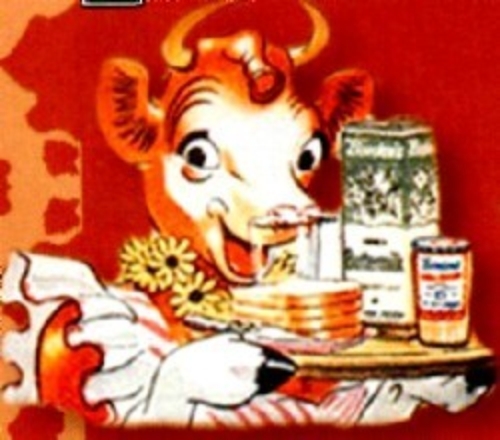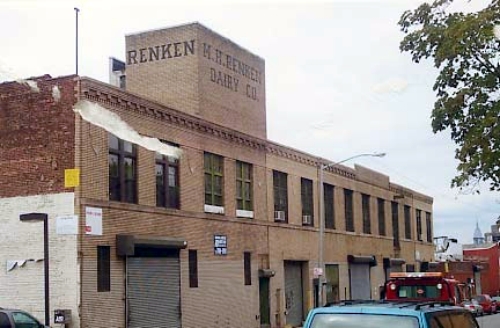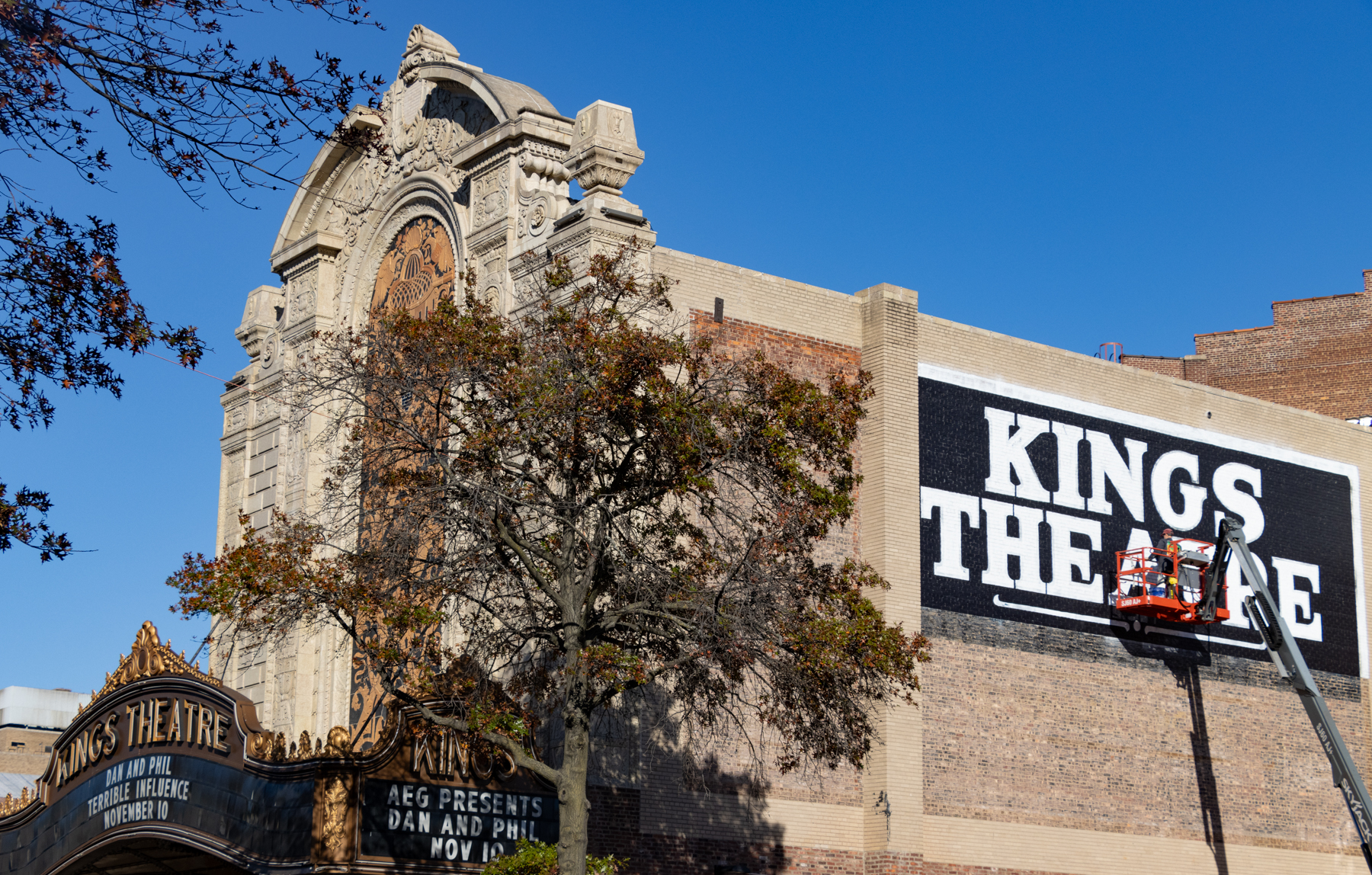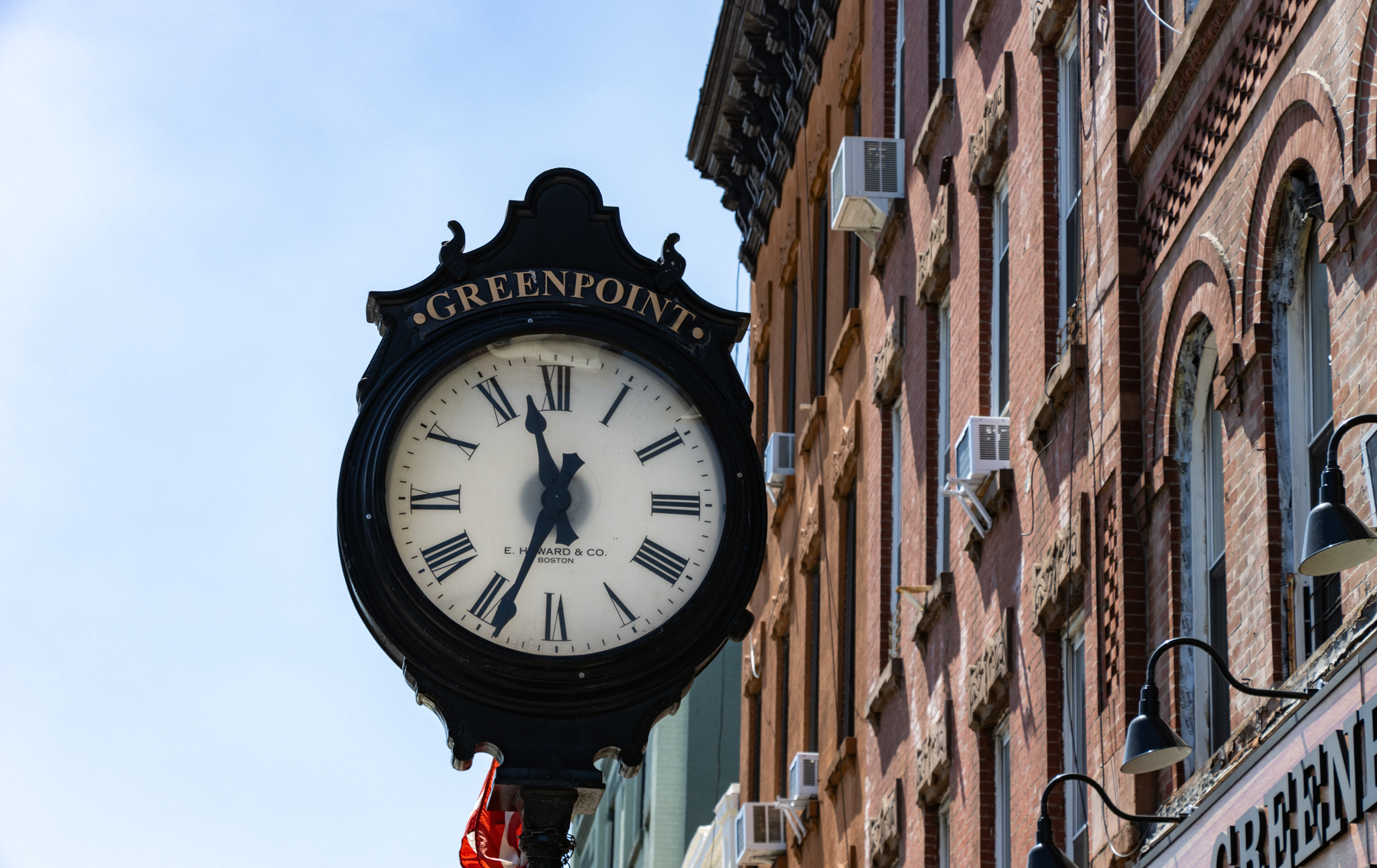Walkabout: The Great Milk Wars, Part 4
(Former Sheffield Dairy Bottling Plant, Fulton Street, Bedford Stuyvesant. Now part of Restoration Plaza.) Read Part 1, Part 2, and Part 3 of this story. In 1938, in the midst of the Great Depression, the battle over milk was raging throughout the country. In New York City, three of the largest milk companies, Borden’s Condensed…

Former Sheffield Dairy Bottling Plant, Fulton Street, Bedford Stuyvesant. Now part of Restoration Plaza

(Former Sheffield Dairy Bottling Plant, Fulton Street, Bedford Stuyvesant. Now part of Restoration Plaza.)
Read Part 1, Part 2, and Part 3 of this story.
In 1938, in the midst of the Great Depression, the battle over milk was raging throughout the country. In New York City, three of the largest milk companies, Borden’s Condensed Milk Company, Sheffield Farms, and U.S. Dairy Products Company, sold two-thirds of all the fluid, or drinking quality, milk in the entire city. These companies competed fiercely with each other, but were united in constituting a virtual monopoly on the city’s milk supply. New York was their town. As a consequence, they were able to dictate prices, and in the mid-1930’s, cut the prices they were paying their suppliers; the farmers of New York State.
At a time when farmers needed money the most, the Big Three were making it impossible for many of the farmers to break even, forget making a profit. Family farms, passed down for generations were being lost. The farmers weren’t going to take it anymore, and began organizing in earnest, to demand fair prices for their milk. It was going to get ugly, and unpleasant, and the threat of New York going without milk was real.
An upstate farmer named Archie Wright had organized his neighbors into the Dairy Farmers Union of the State of NY, known as the DFU. In 1937, they had shown the Big Three that they could organize efficiently and well, and succeeded in closing down Sheffield Farms’ Canton, NY’s milk processing plant, Sheffield’s largest upstate plant, for 108 days. Because the strike was peaceful, and the milk was not spilled out onto the road, but taken to other independent plants, especially important at a time when people were starving, the strikers were beginning to win the hearts and minds of the people, as public opinion turned away from the milk companies, and towards the farmers.
The biggest of the Big Three Milk companies was Borden’s. They realized that they needed to win back the good will of the consumer, and what better way to do that than adopt a friendly and genial mascot? They came up with Elsie the cow. The entire country would soon know Elsie, a bright-eyed cartoon bovine of the Jersey variety with a curl between her horns, a chain of daisies around her neck, and a frilly apron around her, um… waist. She began appearing in Borden’s ads in 1938, designed to give the company a warm and comforting image. Elsie began to get fan mail, and was soon made Borden’s official “spokescow.”
Borden’s had an exhibit in the 1939 World’s Fair, held in NYC. Part of their exhibit consisted of a herd of cows that was milked twice a day. People asked which cow was Elsie, so they picked a pretty candidate who was officially re-named Elsie, and moved her to her own private “boudoir” with pretty milkmaids to take care of her, a four-poster bed and straw mattress, curtains, and a giant telephone, so Elsie could call “the office”. The bemused cow never knew she won the lottery. They also decided she needed a family, so they brought in her “husband”, a bull named Elmer. His boudoir had a poker table so he could have a night with the boys. Soon after, Elsie and Elmer had a “daughter”, named Beulah. All this took place during the World’s Fair.
The public ate it up, and Borden’s, pardon the pun, milked it for all it was worth, even sending Elsie to Hollywood to co-star in the movie Little Men, with actress Kay Francis. After the fair closed in 1940, Elsie and Beulah went on a country-wide tour, first by train, and then by a special truck called the “Cowdillac.” Alas, it didn’t last long. In 1941, while Elsie was scheduled to do a Shubert Alley Theater appearance, someone smashed their car into the back of the Cowdillac, injuring Elsie, and she had to be put to sleep. She’s buried on the Borden’s farm, in Plainsboro, NJ, which is now a housing development. Borden’s immediately got another cow to become Elsie, and she continued to be the spokescow throughout World War II, with other Elsie’s carrying the torch until the early 1970’s. She and Elmer had lots of children, including twins, names that are long forgotten. Ironically, Elmer, who never contributed an ounce of milk in his life, outlasted Elsie, and is still the image, and the name of Elmer’s Glue.
However, in 1939, while Elsie was baking cookies to serve with milk, the farmers of upstate NY were gearing up for the largest strike in milk history. While Elsie and Elmer and their brood were cute, they couldn’t distract from the real financial issues facing farmers and milk manufacturers. Archie Wright was a very good organizer, and had learned the art of non-violent passive resistance well. The milk companies couldn’t paint him and his fellow members of the DFU as violent rabble-rousers, so they branded them the next best thing: Communist rabble-rousers.
In August of 1939, after meetings coordinating all of the state’s chapters of the DFU, a strike was called, with special attention paid to the U.S. Dairy plant in Canton, located in the St. Lawrence Valley, and the nearby Sheffield plant at Heuvelton, both plants closer to Canada than New York City. Over a third of NYC’s milk came from these two plants. Heuvelton was Archie Wright’s home town. With minimal violence, the strike was successful, stopping the flow of milk to NYC, the largest market in the country. For the first time, women played an important role in these strikes, as they picked up the slack from striking men, some running the farms and doing all of the chores in their men’s absence. Cows and other farm animals don’t care if you are on strike, and need to be milked, fed and taken to and from, pasture. Women also were on the picket line, subject to the same abuse as men, which actually drew the farmers even closer together, and more determined to succeed.
The DFU’s success helped change the stereotype, especially in the cities, that farmers were ignorant, stupid hicks. Their sophisticated resistance tactics and their success in seriously affecting the large and powerful milk companies had its desired results. By the third day of the strike, 60% of the milk deliveries to NYC had been stopped, and the Big Three had to negotiate. New York City’s mayor, Fiorello LaGuardia, invited the DFU leadership and the Big Three milk companies to New York to broker a deal. Nine days after the strike had begun; a new deal was struck, with the farmers receiving a 45% increase over what they had been given before the strike. It was a tremendous victory for the Dairy Farmers Union. The farmers upstate celebrated with parades and marching bands. But they were a bit premature. Elsie’s parent company and its cohorts were about to drop some big cow patties on their victory.
No sooner had the ink dried on LaGuardia’s agreement, then the Big Three decided to ignore it. Instead they launched a massive smear campaign on Wright and the leadership of the DFU, branding them as subversive Communists. Although he vociferously denied any Communist ties or membership, the campaign against him was so powerful that it split the DFU into factions, with many members calling for Wright’s head. Elections were held, and Wright’s opponents, who peppered the voting convention with flyers and signs reading “”Mr. Wright Denies It, But Communism Is In Dairy Farmers Union,” and “Who Is the Rubber Stamp For the Communist Party Inside the Dairy Farmers Union?” Wright lost, big time, and the leadership of the DFU went to those who were paid off by the Big Three. The Dairy Farmers Union would never again be able to organize as well, or command the attention of the milk producers, or the public, as it had done in the Milk War of ’39. New pricing structures were established, higher than before the strike, but not as high as what Wright had negotiated. But the milk continued to flow, life went on, and soon, World War II changed everything.
Meanwhile, in New York City, the Big Three were changing from horse drawn milk wagons to motorized trucks. Their huge stables in Manhattanville, near the train station, would become obsolete. In 1938, Sheffield Farms built the largest milk depot and distribution plant in the world, on W. 57th Street. Trucks could take milk to all corners of Manhattan more cheaply and faster than horse drawn wagons. The milk industry was modernizing, at the same time they were being threatened upstate. After regaining control when the Milk Wars were over, and then when World War II was over, all of the Big Three’s plants were moved outside of the city. The Manhattanville stables were sold to Columbia University. CBS would eventually buy the W. 57th St. plant, and it is still the location of their broadcast studios.
The plants in the Bronx, Brooklyn and Queens still operated for many years, but the milk business was changing from home delivery and stand-alone milk stores to supermarkets. 75% of their business had been home delivery. By the 1960’s, that number was reduced to only 25%. Other milk products, especially ice cream, began to become as important than milk. Today’s milk wars are not between farmers and monopolies, but are now about whole milk, organic milk and milk additives. Times have certainly changed.
Brooklyn had many dairy buildings, most of which operated until the 1960’s. They include the Sheffield Farms bottling plant on Fulton Street, between New York and Brooklyn Avenues, in Bedford Stuyvesant. That is now the centerpiece of Restoration Plaza, created in the late 1960’s. There is a similar plant in the Bronx. Borden’s had a plant on Classon Avenue, near Pratt, as well as a plant on Ralph Avenue, between Monroe and Gates, also in Bed Stuy. Their plant in Boerum Hill was at 85 3rd Avenue, and their most famous plant was on Atlantic Avenue, near Barbey Street, in East New York. This building is famous for its terra-cotta friezes of farmers and their cows, now barely visible from the street. There was also an independent dairy called R.H. Renken, which had a factory on Myrtle and Classon, in Clinton Hill. These buildings, some of which are now unused, are the only remnants of the many dairies, and factories that once made the Big Three the kings of New York Milk.
Source materials: “Manhattanville and NY’s milk supplies” by Mary Habstritt; “Elsie the cow’s rise to stardom” by Sam Moore, and “The 1939 Dairy Farmers Union Strike” by Thomas J. Kriger, the New York Times, and Forgotten New York.














What's Your Take? Leave a Comment